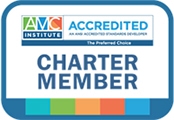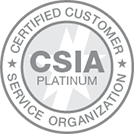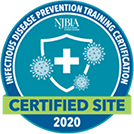By Amy Williams, AH Senior Director 
A few years before the Society for Information Management (SIM) became an AH client partner in 2012 they undertook a complete restructuring of their governance model in order to position the organization for growth.
SIM is a professional association of senior IT professionals. The restructuring was beneficial to the organization and enabled significant growth over the last several years. SIM currently has a budget of $4.2M, over 4,600 members, 38 local chapters and valuable program offerings.
Why Streamlining Was Necessary
In 2008, a task force of several influential SIM leaders was formed to evaluate the organization’s current operating model and make recommendations on what model would be most effective for SIM going forward.
At the time, the Board consisted of 18 individuals – officers, chapter representatives and individuals charged with specific program responsibilities. The day-to-day operations were managed by an association management firm, several quasi-volunteers (members who were also paid independent contractors) and volunteers.
The Board performed a combination of executive, strategic and operational duties. To accomplish these duties, the board was large (too large to be effective), and had very broad and deep responsibilities. It was difficult to maintain focus at board meetings and operational issues usually took precedence over strategy.
The Board performed a combination of executive, strategic and operational duties. To accomplish these duties, the board was large (too large to be effective), and had very broad and deep responsibilities. It was difficult to maintain focus at board meetings and operational issues usually took precedence over strategy.
The Board concluded that it had outgrown its current governance model.
A Governance Model for the Future
The task force presented several board models to the Board for consideration. There was consensus that the most effective model for SIM would be to segment responsibilities between a Governing Board and a management council. The organization also decided to directly hire a paid Chief Executive to oversee the day-to-day management, strategy implementation and be the bridge between the Board and Management Council.
The new governance model and Chief Executive were implemented in 2010. In late 2011, the Board selected AH as the new association management company to manage the day-to-day operations.
The new Governing Board was reduced to eight members: a Chair, Vice Chair, Secretary/Treasurer and 4 chapter representatives. The Chief Executive is as an ex-officio, nonvoting member and the AH Account Executive participates in meetings and supports the board as well. The Board’s role became:
- Strategic planning
- Succession planning
- Establishing annual outcomes
- Accountability
- Policies
- Financial stability
- Mission, vision, return on investment
The newly formed Management Council is a group of volunteers and quasi-volunteers that have direct program responsibility. The number of members was not set purposefully to allow appointments and changes to be made by the Chief Executive dependent on programs and services. The council typically has 15-20 members, is led by the Chief Executive and is supported by the AH Account Executive. The Management Council’s role is:
- Planning and execution to achieve annual outcomes
- Managing the affairs of the organization
- Reporting
- Adhering to bylaws, policy, laws
- Committee management and volunteer recruitment
- Membership and program growth
- Financial management
- Transparency of operations (to board, chapters and members)
Preparing for the Change
Over the course of the two years between when the decision was made and when the change was fully implemented, the volunteers worked on numerous initiatives (with key milestone dates set) to prepare, including:
- Determining Board and Management Council selection criteria
o The Board would have members with strategic skills that were well known, connected and established executive practitioner leaders (likely with limited time)
o The Management Council members needed to be able to get things done, did not necessarily need to be as well-known or connected, and could be volunteer practitioners, non-practitioners (i.e. consultants and/or vendor members), quasi-volunteers or staff
- Roles and responsibilities were defined for the Board, Management Council and Chief Executive positions
o The Chief Executive is the key leader of SIM, is from within the IT industry and is intentionally not a staff person of the AMC
- The Board evaluated numerous decision areas (e.g. vision/mission, strategy, funding, advocacy position, etc.) and determined which body had proposal, decision and input authority for each
- The election process for the Board was refined so that the skill sets and experience of candidates could be thoroughly evaluated o The Management Council roles are appointed by the Chief Executive with Board approval
- The Chief Executive was recruited and hired (the initial hire served in that role for two years; a new Chief Executive was hired in 2012)
- There was frequent, regular communication with chapter leaders and members about the upcoming changes in order to build buy in
- The bylaws were amended to implement these changes (SIM’s bylaws can be amended by a vote of the Board)
Outcomes of the Change
AH has been working with SIM under this governance model since 2012. In general, the model has been very effective and has enabled SIM to grow significantly.
Each body holds a monthly 60-90 minute conference call. They both also meet two times in person – once at the annual conference and once at our annual Chapter Leader Summit. On alternating years, the Board holds a 1-2 day strategy session to revisit and revise SIM’s strategic goals and objectives.
Management Council members regularly interact with chapter leaders via phone calls and in-person chapter meetings to update them on program area activities, gather feedback, offer assistance and encourage promotion of SIM’s national programs on a local level.




